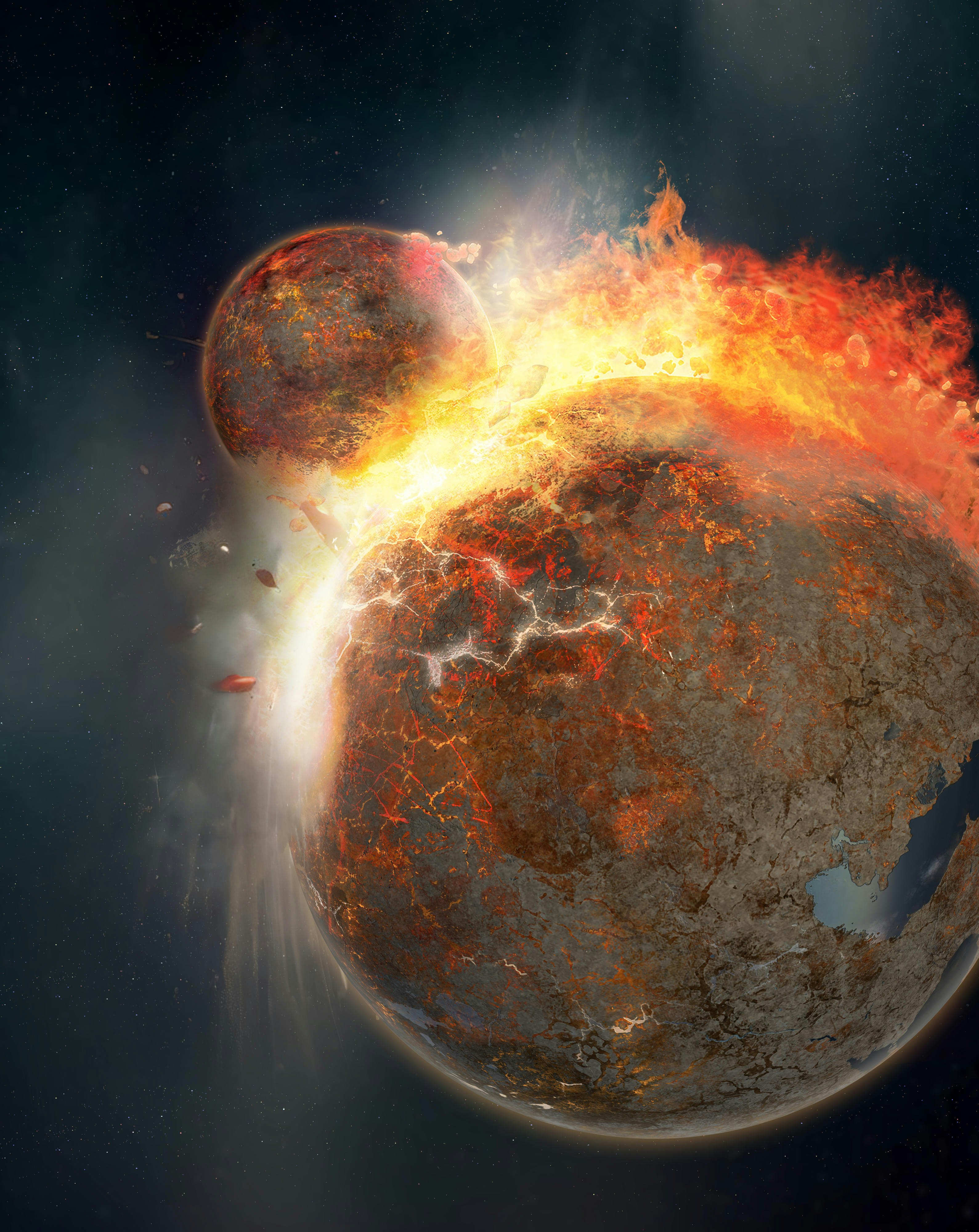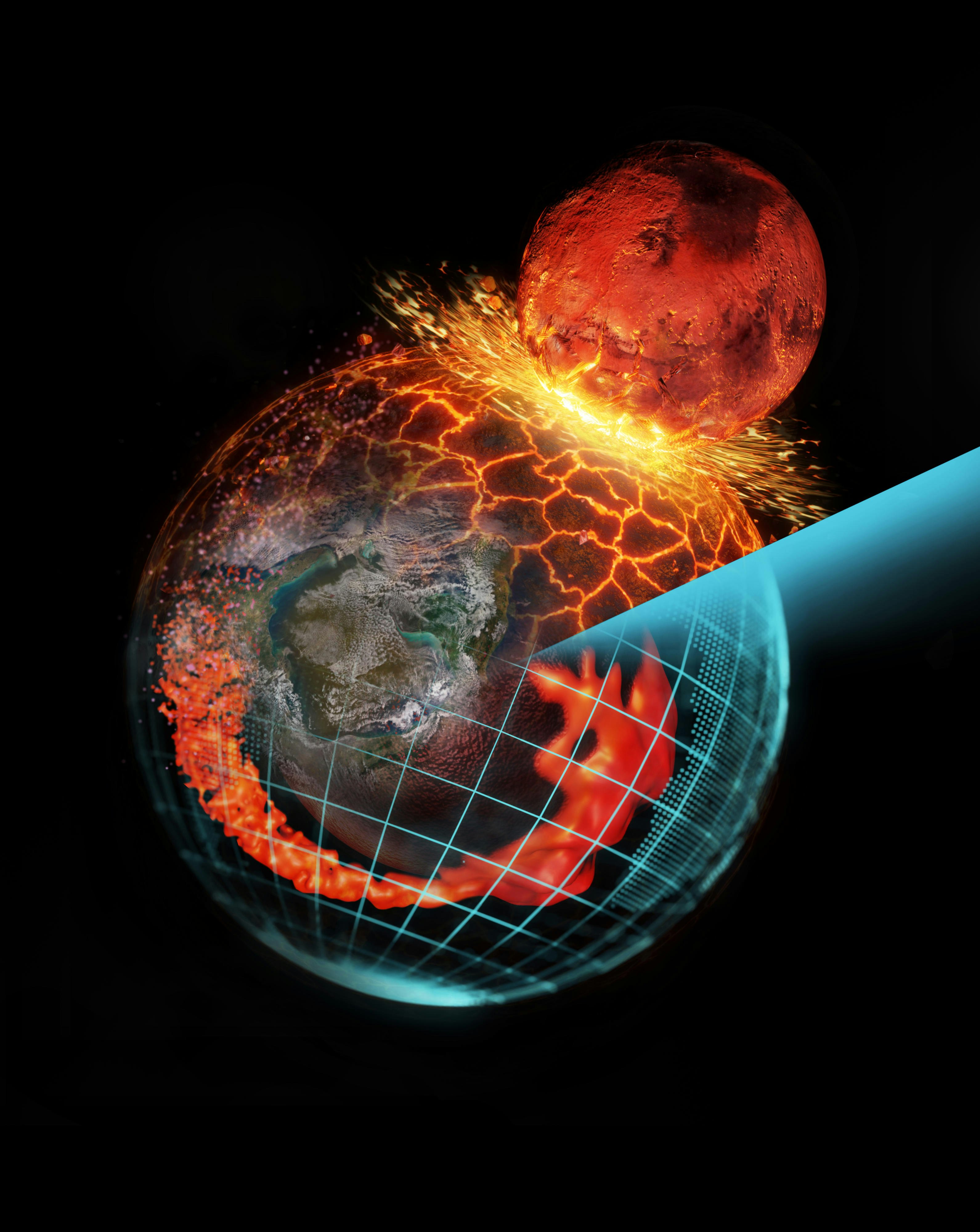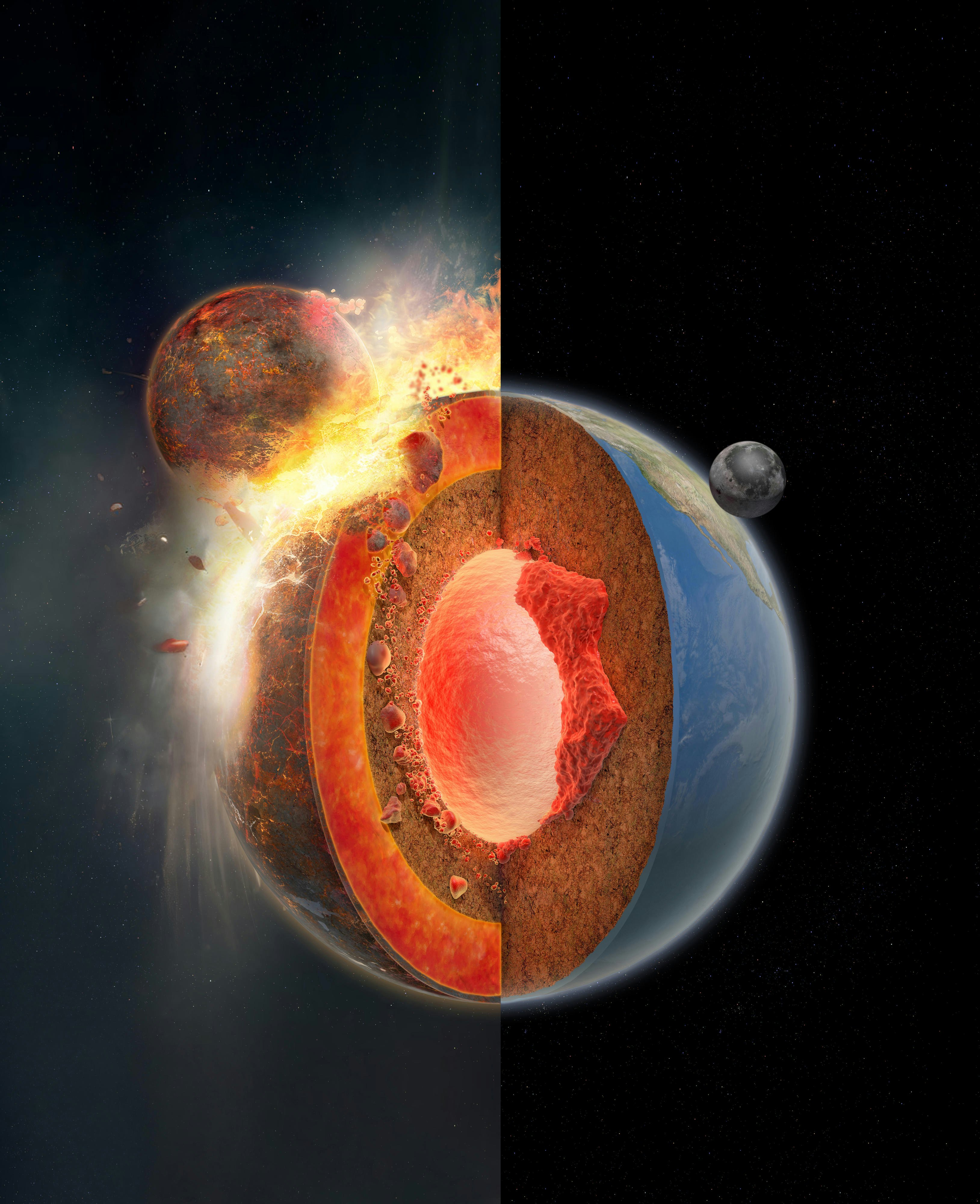
Astronomers have long suspected that the Moon formed roughly 4.5 billion years ago when a hefty planet-in-the-making called Theia collided with a young Earth. Now, researchers have found evidence that massive blobs deep within Earth are actually relics from long-lost Theia. If true, other planets may also be filled with parts of their ancient foes.
Scientists call Theia’s strike the Giant Impact. This was probably the last major event during Earth’s accretion phase when it was growing larger and regularly getting bombarded by space material. The Giant Impact is time zero on the clock for Earth and the Moon. This is why Qian Yuan, a geodynamicist at the California Institute of Technology who is interested in what makes some planets friendly to life, led a team of researchers to look into this ancient phase.
“So far, Earth is still the only habitable planet, but we do not know why Earth is habitable and others are not. As a modeler, I believe that the initial condition is crucially important, and it is widely believed that the Moon's formation set the initial condition of Earth,” Yuan tells Inverse.

The middle layer of our planet, called the mantle, is an important part of the habitability question. It’s intrinsic to the carbon cycle, for instance, which is required to form complex molecules like proteins and DNA. Carbon is continually exchanged between the ocean’s surface waters and the atmosphere and can also be released in grand displays like volcanic eruptions. Sitting atop the mantle is the crust, which has evolved over time from supercontinents to the seven land masses where you find humans and many other terrestrial creatures living today.
Just below the mantle, there’s Earth’s outer liquid core. This powers the magnetic field that cocoons our planet from cosmic radiation that would pose a threat to life. Two blobs near the boundary between the mantle and the outer core, some 2,900 km below the surface, maybe Theia relics, according to simulations run by the team of astronomers. They published their findings on Wednesday in the journal Nature.
A previous study, published in Nature in 2016, showed these two continent-sized anomalies at the base of the mantle via seismic images. To create these images, seismologists use waves generated from earthquakes, which have traveled through the center of Earth, Edward Garnero, a geophysicist at Arizona State University, who was the lead author of the 2016 Nature study and a co-author of the new work, tells Inverse.
“In a similar way to ultrasound or MRI machines, we study recordings of the waves after they have traveled through structures or reflected off of them to identify anomalies. In this way, ‘pictures’ of the interior are computed, just like X-ray images,” Garnero says.
Another study, published in the journal Geochemistry in 2019, suggests that Theia’s collision would not have mixed ancient isotopes effectively due to its “hit-and-run” or “merger” nature.
In the new study, researchers simulated how the mantle would have sloshed about over the last 4.5 billion years and what the cataclysmic 24 hours looked like after the Giant Impact.
Theia was a protoplanet, so its abundance of material would have separated into layers. Theia also had a mantle, and the simulation work shows that Theia’s mantle material (TMM) could have sunk into Earth’s own mantle after the Giant Impact. The “mostly molten” TMM may have later solidified and sunk down to Earth’s lowermost mantle, the study says. Other work, like a study published in Nature in 2012, suggests that some ancient accreted material, which predates the 4.5 billion year benchmark that usually serves as the start of Earth’s clock, may have survived the convection of Earth’s mantle.
Some of this material may have been what Theia captured from the protoplanetary disk, the dusty puff where the entire Solar System originated.

Yuan is still researching these relics, looking into the subsequent influences of the deep Theia blobs on the tectonic evolution of Earth's surface. And by doing so, aims to tie the epic past to the modern day.







